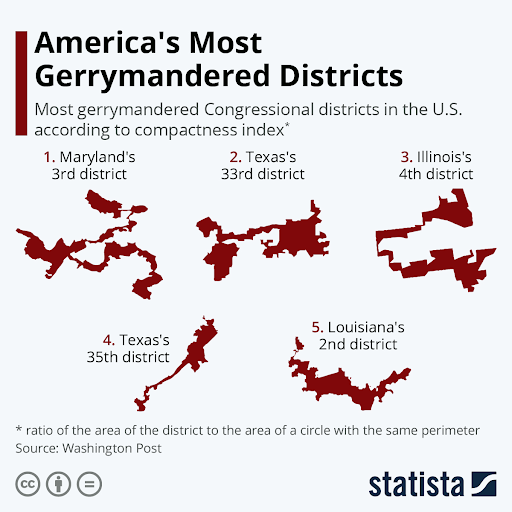| Hi there, Welcome to the third installment in our newsletter series from the Voting Rights Fund (VRF). As a national leader in the fight to preserve voting rights, VRF endorses and funds champions of democratic values and electoral access. In this edition, we explore the history and enduring impact of the Voting Rights Act (VRA), with a focus on its role in advancing racial enfranchisement in the United States. From dismantling language barriers to ensuring fair district maps, the VRA has been instrumental in expanding access to the ballot. At VRF, we support voting rights champions who share our values and are committed to defending the right to vote for every eligible American. This year marks the 60th anniversary of the Voting Rights Act. We celebrate this milestone by recognizing the VRA’s transformative role in American democracy and renewing our commitment to protecting the rights it enshrined. The Origins of the Voting Rights Act Before the passage of the VRA in 1965, two key constitutional amendments laid the groundwork for racial enfranchisement. The 14th Amendment guaranteed equal protection under the law, while the 15th Amendment prohibited racial discrimination in voting. Yet despite these legal protections, Southern states employed widespread voter suppression tactics, including poll taxes, literacy tests, intimidation, and violence to disenfranchise Black voters. Civil rights leaders and organizations like Dr. Martin Luther King Jr., the NAACP, the Southern Christian Leadership Conference, and the Student Nonviolent Coordinating Committee mobilized a national movement to demand meaningful voting rights protections. The mass mobilization and public pressure from widespread non-violent demonstration and lobbying members of congress culminated in the passage of the Voting Rights Act. The VRA prohibited discriminatory voting practices and provided federal oversight for jurisdictions with a history of racial discrimination. The VRA’s core provisions include: - Section 2, which bans any voting law or practice that discriminates on the basis of race or color.
- Section 4(b) and Section 5, which together established “preclearance” requirements for certain jurisdictions to obtain federal approval before making changes to voting laws. Although the Supreme Court significantly weakened this provision in Shelby County v. Holder (2013), states like Maryland have since reinstated their own preclearance laws to preserve protections.
Breaking the Language Barrier The fight for inclusive access did not stop in 1965. In 1975, Congress amended the VRA to include Section 203, requiring jurisdictions with significant language-minority populations to provide bilingual voting materials and support. This reform was critical to enfranchising communities where English is not the dominant language. Today, some jurisdictions are using innovative tools to further expand access. In 2024, polling places in Denver trialed handheld translation devices, offering real-time language support in over 80 languages. The Census and Redistricting: The Fight Against Gerrymandering Every 10 years, the U.S. Census provides vital demographic data used to redraw electoral district boundaries. This redistricting process is essential to maintaining equal representation, but it has been used to manipulate district borders to suppress voter power. Gerrymandering tactics like packing (concentrating voters of one group into a single district) and cracking (spreading them across many districts to dilute their influence) remain major threats to fair representation. Although the VRA sought to combat these practices, the Supreme Court’s 2019 decision in Rucho v. Common Cause ruled that federal courts cannot adjudicate cases of partisan gerrymandering, leaving enforcement to the states. Since then, some states have acted to restrict gerrymandering, while others have moved in the opposite direction. In Texas, lawmakers have redrawn district maps ahead of the 2026 midterm elections, ahead of the normal decennial cycle, raising alarms about the potential for manipulation. The newly proposed map would potentially increase the amount of Republican controlled districts to 79%, up from 66%. Other states, like New York and California, are also reviewing their processes. California, notably, uses an independent redistricting commission and bans partisan gerrymandering in its constitution. 
Undercounts in Census data, particularly among low-income and minority populations, further complicate redistricting. The consistent underrepresentation of these groups has, historically, skewed representation and disenfranchised these communities. That’s why VRF supports redistricting reforms that protect against bias and uphold the principle of “one person, one vote.” VRF also supports the highest quality data collection and equitable systems for apportioning votes. Conclusion: Celebrating 60 Years of Progress and the Work Ahead The fight for racial enfranchisement has spanned generations. The Voting Rights Act remains a cornerstone of American democracy, responsible for expanding access, securing representation, and ensuring fair elections. As we commemorate its 60th anniversary, VRF honors the work of those who made it possible and we recommit ourselves to the cause. Today, VRF-endorsed leaders are working to strengthen these protections by advancing the John R. Lewis Voting Rights Advancement Act, which would restore and improve key provisions of the original VRA. This legislation aims to increase access to the ballot, protect against discrimination, and promote equity in representation. To support our work or learn more, visit our website or consider making a contribution today. —Voting Rights Fund P.S. If you have a chance, could you please chip in to support our work fighting back agaisnt Gerrymandering? Paid for by Voting Rights Fund and not authorized by any candidate or candidate's committee
|